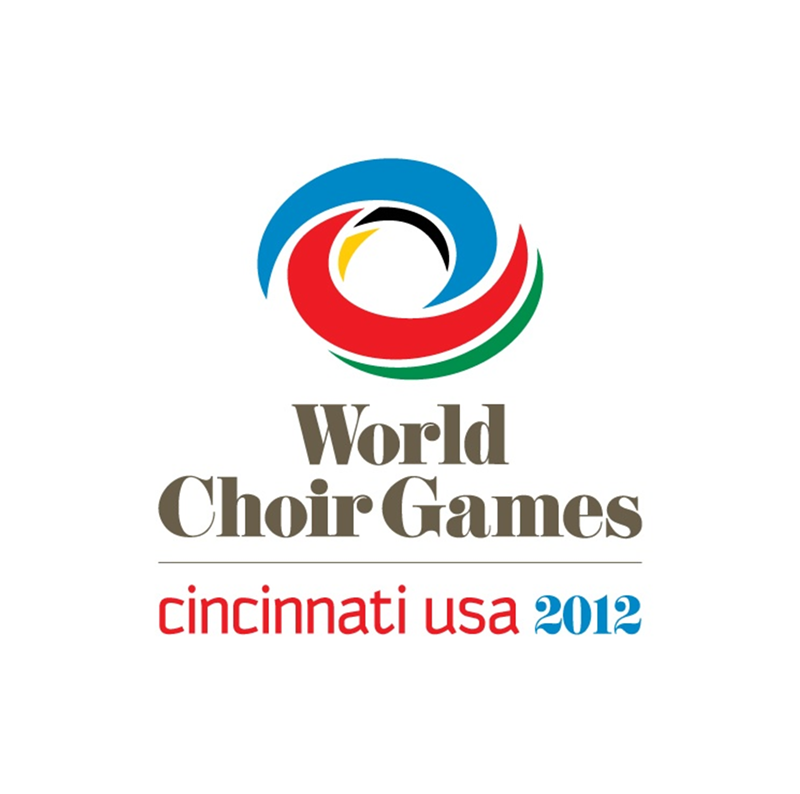I had a trip around the world on Sunday afternoon, thanks to the World Choir Games. It includes stops in South Africa, the Netherlands, Venezuela, Switzerland, and the Chinese cities of Guangdong, Shanghai, Hong Kong and Hangzhou. The program, playing to a completely sold-out house at the Aronoff Center's Procter & Gamble Hall, was a chance for eight choirs, each champions in one or more categories, to briefly showcase a few selections. Singer, performer and Cincinnati native Drew Lachey hosted the afternoon program.
In order, we were treated to performances by the Shanghai Conservatory of Music Girls Choir (Female Choirs champion); the Diocesan Boys' School Choir from Hong Kong (Young Male Chorus champion); Männerstimmen Basel from Switzerland (Male Choirs Champion); the "8 Seconds" Mixed Chorus fa Hangzhou Normal University (Mixed Youth Choir champion); the Children's Choir of the Orchestra of Laraand Camerata Singonica Larense from Venezuela (Folklore champion); Guangdong Experimental Middle School (Youth Choir of Equal Voices champion); Stellenbosch University Choir from South Africa (a double champion for Musica Sacra and Mixed Chorus); and Dekoor Close Harmony from the Netherlands (another double champion, for Popular Choral Music and Jazz).
That's too many to offer song-by-song details from the two hour program, but I want to share some memorable highlights. Perhaps most powerful was the "African Prayer," sung by the Stellenbsoch choir, following a remark from the group;s director about how much they appreciated Cincinnati's hospitality. I head this group sing the same number on Thursday evening's celebration concert, and it was equally powerful — driven by full-voiced female singing, rhythmic clapping and building enthusiasm. What's more, the director sat down and let the choir proceed under its own steam. Demonstrating their varied repertoire, the same group also did a quirky rendition of Queen's "Seaside Rendezvous," playing kazoos for part of the number.
The Chinese choruses showed tremendous discipline, carefully following their directors and, especially in the case of the group from Shanghai, creating a pure, crystalline sound that was virtually one voice. Each of those choirs were also stylishly dressed in matching costumes. (I found myself wondering how transportation was handled for these choirs, not just for the singers but for their gowns and other attire. No one seemed to have left anything behind!)
The group from Basel looked more like a scruffy Euro band, about 30 men, some with beards, others with wooly heads of hair. Many of them wore knee-length pants and suspenders. But their singing was strong and well-rehearsed. The Venezuelans were in costumes that had a Latin flair, especially the women in white, knee-length dresses with traditional, multicolored ruffles on their hems and necklines. This latter group had a fine sense of humor, especially for its tongue-twisting final number that involved singing faster and faster, then concluding in a sort of faux collapse of exhaustion.
Most unlike other choirs I've heard, Dekoor from the Netherlands, which sang in colloquial American English offered three numbers from the Pop repertoire. The group of 30, evenly divided between men and women, opened with "We Are Young," a song about friendship, youth and trust — all qualities represented by their stances and interactions (a repeated lyric: "We are young/So let's the set the world on fire/We can burn brighter/Than the sun"). They moved next to James Taylor's paean to frustration, "Damn This Traffic Jam," and as an encore rendered a funky version of George Michael's "Freedom." Quite a switch from beautifully executed but not so stirring sacred numbers.
For my second concert of the day, I was back at the Aronoff for the Energy of Youth" Celebration Concert featuring three groups. The frist was local, the Cincinnati Children's Choir, mostly junior high and high school youths. They were augmented for the second half of their program with a specially formed "Cincinnati Public Schools Honor Choir," a pair of singers selected from each of the CPS elementary schools. They concluded with two numbers commissioned for the event and conducted by composer Rollo Dillworth; the finale, "Ain't Gonna Let Nobody Turn Me Around," had a clapping rhythm that engaged the entire audience. What this group lacked in polish (they had only three rehearsals) they more than made up for in enthusiasm.
The next group was the Farnham Youth Choir from Great Britain. Forty singers, mostly girls (there were three boys with voices not yet changed) offered a varied set that combined some sacred numbers with some folk-inspired pieces (The Piper o'Dundee" and ""Iona Boat Song"). Most interesting was a number titled "Aglepta," that began with a single member reciting this text: "To leave a enemy without an answer, say this words to him: Aglaria Pidhol garia Ananus Qepta" and blow in his direction; then he will not know which way he is headed and cannot answer you." What followed was a strange collection of sighs, whistles, squeals, shrieks, clapping and other odd noises, an odd showcase of discipline that was a long way from the more traditional numbers. It was a bit fearful, and completely captivating.
The program concluded with a set by the Guangdong Experimental Middle School Choir that was as much choreography and tradition as it was a choral performance. Native costumes, a Mongolia throat singer, drums, bells, wild dancing — this performance made me think about how little we know about other parts of the world ... and how much an event like the World Choir Games opens us to learning about other cultures.
Quite a day.


